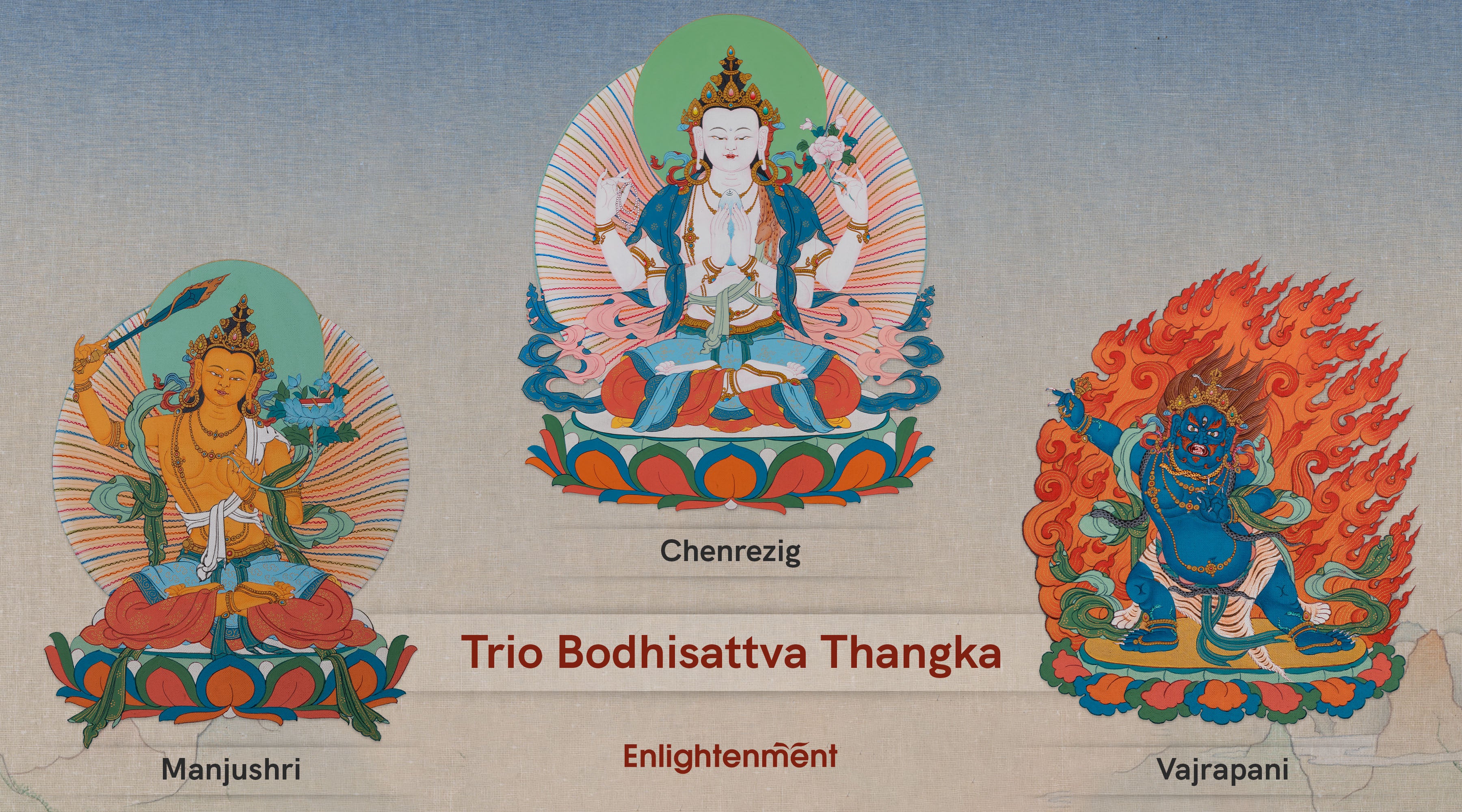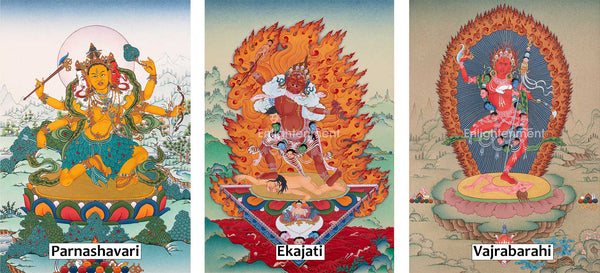Unveiling the Trio Bodhisattva Thangka Symbolism
The trio of bodhisattvas; Chenrezig, Manjushri, and Vajrapani is predominantly known as Rig Sum Gonpo. Hailed as three of the eight sons of Shakyamuni Buddha, this triad holds command of all the qualities of an enlightened one.However, their sageness on each particular consciousness makes them pious to be seated together.
Take a closer look at each bodhisattva’s perfection on their distinctive dominions:
- Chenrezig incorporates compassion
- Manjushri assimilates wisdom
- Vajrapani embodies power
The attributes brought by balancing the three Bodhisattva lessons accentuate integrity and virtuousness. The cycle of learning and implementing compassion, wisdom, and power is one truth not to be ignored.
Chenrezig: Symbol of Compassion

Therefore, Chenrezig is usually depicted as white, holding a lotus in one hand and a Japa mala in another. His forms often differ ranging from one face, two arms, four arms, eight arms, and even a thousand arms.
His masculine semblance may also come in three faces and eleven faces. Thus, the reason for his many names such as Avalokita, Avalokitesvara, Guanyin, Kannon, Chenresig, and more.
Whatever the form and name, the four-armed Avalokiteshvara is considered the most revered one, as the mantra “Oṃ maṇi padme hūm̐” is associated with him.
Manjushri: The Ultimate Symbol of Wisdom

The sword represents his prowess to cleave down ignorance and duality while the lotus symbolizes his attainment of knowledge.
Hence, Manjushri sits on the lotus with grace with the attire of a prince as he withholds the boundless ability to tame the physical realm with his mind. His epithets include Mãnjughoṣa (Sweet Voice) and Vāgīśvara (Lord of Speech).
Vajrapani: The Ultimate Protector

The thunderbolt-bearer bodhisattva portrays the power of the Buddhas. Vajrapani is a yaksha turned bodhisattva; he is wrathful yet protective.
He holds the vajra in his right hand while he stands atop a lotus engulfed in flames suggesting his fiery aura.
Up close to his face, the Lord of Secrets possesses a third eye that sees deeds beyond a mortal’s life. Thus, the vajra-holder upholds truth even in darkness and ignorance.
Vajrapani is also attired in serpent jewelry which signifies his protective nature, as it is said that he saved them from Garuda, the eagle-god and the natural enemy of the serpents or the nagas.
Considering the fact that there are Eight Bodhisattvas in Tibetan Buddhism, with each one wielding a distinctive quality, the above trinity is the figurehead of pure beliefs and its equilibrium.
Chenrezig, Manjushree, and Vajrapani; all of them started their journey with the Shakyamuni as minor deities but their disciplined and consistent meditation helped them acquire the nine consciousnesses.
As they attained enlightenment, the trio of compassion, wisdom, and power traversed through all ten bhumis yet their teaching guided others to attain enlightenment.
The trio Bodhisattva thangka represents the three embodiments of Buddha in a singular frame.


